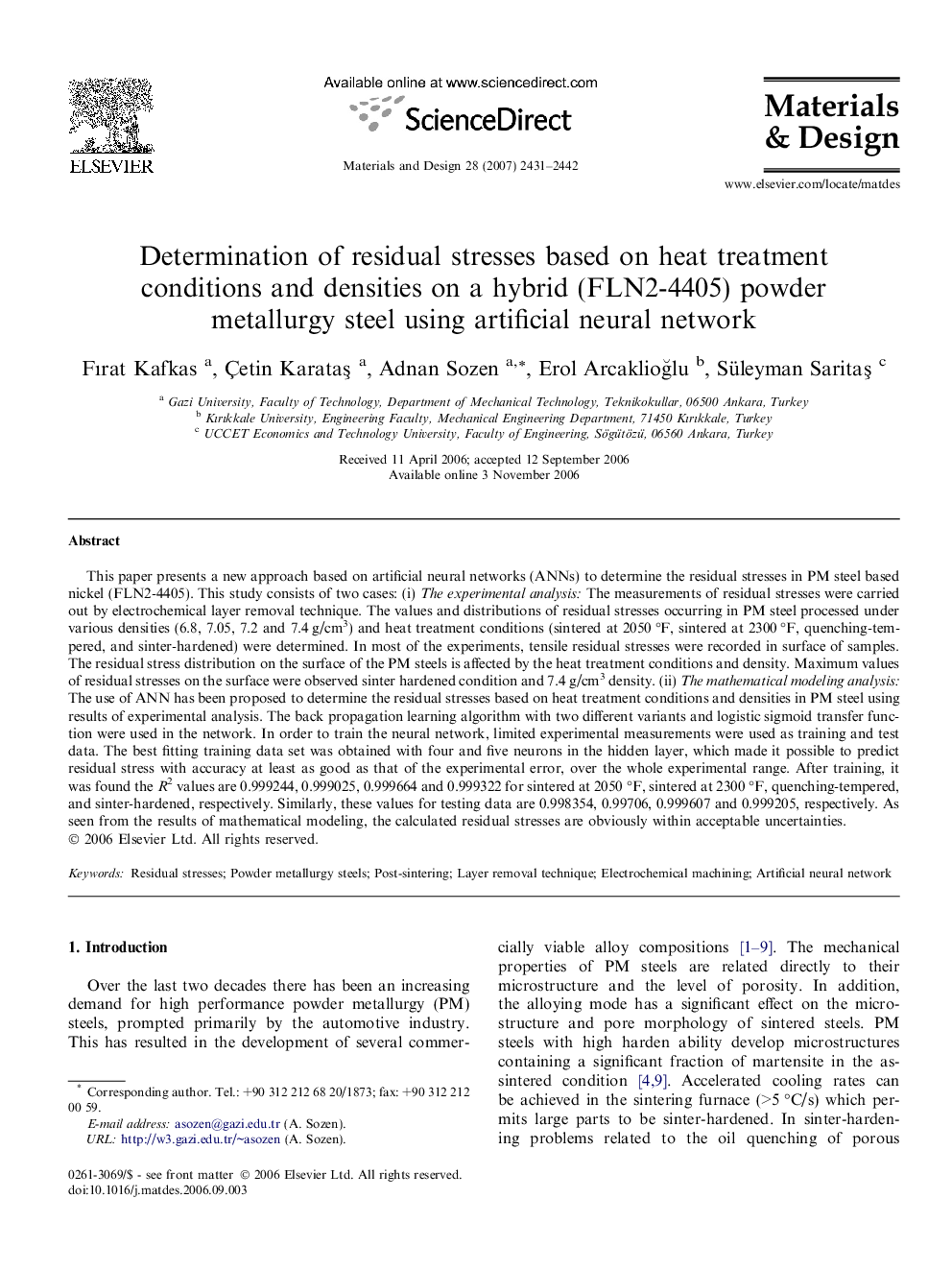| کد مقاله | کد نشریه | سال انتشار | مقاله انگلیسی | نسخه تمام متن |
|---|---|---|---|---|
| 833432 | 908143 | 2007 | 12 صفحه PDF | دانلود رایگان |

This paper presents a new approach based on artificial neural networks (ANNs) to determine the residual stresses in PM steel based nickel (FLN2-4405). This study consists of two cases: (i) The experimental analysis: The measurements of residual stresses were carried out by electrochemical layer removal technique. The values and distributions of residual stresses occurring in PM steel processed under various densities (6.8, 7.05, 7.2 and 7.4 g/cm3) and heat treatment conditions (sintered at 2050 °F, sintered at 2300 °F, quenching-tempered, and sinter-hardened) were determined. In most of the experiments, tensile residual stresses were recorded in surface of samples. The residual stress distribution on the surface of the PM steels is affected by the heat treatment conditions and density. Maximum values of residual stresses on the surface were observed sinter hardened condition and 7.4 g/cm3 density. (ii) The mathematical modeling analysis: The use of ANN has been proposed to determine the residual stresses based on heat treatment conditions and densities in PM steel using results of experimental analysis. The back propagation learning algorithm with two different variants and logistic sigmoid transfer function were used in the network. In order to train the neural network, limited experimental measurements were used as training and test data. The best fitting training data set was obtained with four and five neurons in the hidden layer, which made it possible to predict residual stress with accuracy at least as good as that of the experimental error, over the whole experimental range. After training, it was found the R2 values are 0.999244, 0.999025, 0.999664 and 0.999322 for sintered at 2050 °F, sintered at 2300 °F, quenching-tempered, and sinter-hardened, respectively. Similarly, these values for testing data are 0.998354, 0.99706, 0.999607 and 0.999205, respectively. As seen from the results of mathematical modeling, the calculated residual stresses are obviously within acceptable uncertainties.
Journal: Materials & Design - Volume 28, Issue 9, 2007, Pages 2431–2442